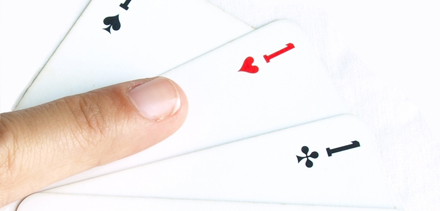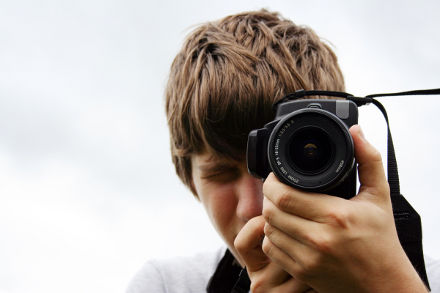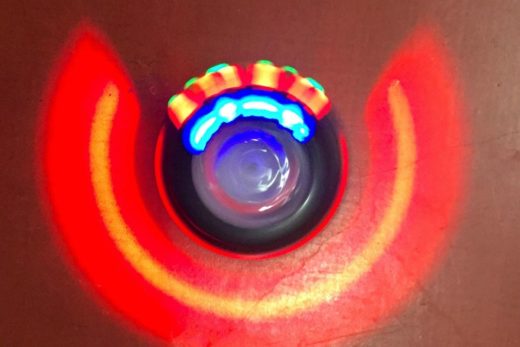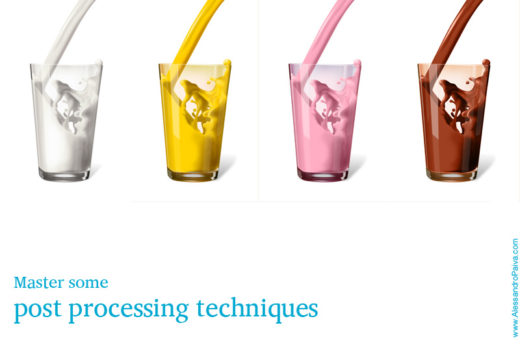I wanted to make a transition from P&S to DSLR. So I asked Google, my all-knowing ever-faithful friend, “What should I do?”. The keeper-of-all-knowledge promptly dumped thousands of camera reviews in front of me to choose from. “Oh my!” – I pinched myself.
When I started searching for a DSLR buy, I didn’t know anything except comparing spec sheets of different camera models; and of course how a DSLR looked! Quickly something became clear to me. Either I have to read reviews written on countless camera models by scores of people or I can ask a learned friend.
I chose the latter. For me, it was Urvesh. If you don’t have anyone, don’t worry, you can start your research from this post 🙂
Choosing the right DSLR
As I said, I was making the transition from a digital camera to a DSLR, my main worry was to locate a decent camera with which I can learn photography – within my budget.
Whatever your limitation, always “Remember to buy a body with more features. The most important of all is to have a body with inbuilt motor which will save a lot on future purchase of lenses. Also it will save hefty amount if you plan to do flash photography.” (Urvesh)
The following pointers can aid you in arriving at a decision.
1 – Talk to other photographers. Understand what gear they are using and why.
2 – Now with that knowledge, ask yourself – What is your aspiration? Stay amateur or go professional?
3 – Try to make your investment as best possible today so that you have no sorrows later. No point saving a couple of hundreds when you can get a superior body with that.
4 – Try to avoid buying a discontinued model.
5 – Understand the pros and cons of your chosen model from dpReview. [Related article – Best Review sites on camera]
Choosing the right Lens
DSLRs come with an optional lens with them called “Kit Lens”. You can either opt for it or buy another lens of your choice.
18-55mm is the most common kit lens. Only for higher end models(i.e. D90, when compared to entry level DSLRs) they offer 18-105mm as kit lens. These are generally mechanically and optically very good. The 18-55mm lens that used to be supplied with D40 was AF-S, ED, G, which was optically (plastic mount makes it score less on mechanical built) very good and a good lens that produce good results for beginners. But the 18-55mm that is supplied now-a-days with D3000 and similar is only AF-S, G, and not ED (Extra Low Dispersion), which usually controls glares and fairs well during high contrast scenes.
“This range (18-105mm) will be good if you are starting off with photography. Later on, depending on your preference, you can buy wide-angle (for landscapes and architectural scenes), telephoto (for birds, portraits and wildlife) or macro-prime (for macro, portraits and product shots) lenses.” (Urvesh)
Compatible mount lenses for DSLRs from different vendors are also available in the market. This means that you should not strictly have to buy a Nikon lens (known by the brand name Nikkor Lenses) for a Nikon DSLR or a Canon lens for a Canon DSLR(which was, by the way, one of the many startling realizations for me). Check the site Photozone.de for detailed expert reviews of DSLR lenses.
And before we move on to the next topic, “One lesson that I have learned is that somehow if the image quality doesn’t come out that good, sharp and crisp, you will always have a guilt feeling developing inside you that why didn’t I consider going for a higher quality lens or why is my camera not able to take sharp pictures. But post-processing can do wonders, so that this may not be an issue that will limit our creativity and expression.” (Urvesh)
Cramming everything into a budget
Limiting your buy on to a tight budget can be a little tricky. It sometimes make us compromise on many things.
With or without warranty?
One of the options is to purchase from gray market. This can reduce your bill by about 2/3rd or 4/5th. Should you choose to do so, please keep in mind that it is always better to buy DSLR body with warranty and lens without.
Second Hand purchase
Craigslist can help you locate local sellers who are willing to let you inspect them in hand. Also see if there is any photography forum covering your locality of residence.
Choosing the right accessories
Once you have the bare necessities to start shooting, I say, worry about other accessories later. But hey, it’s your choice!
UV Filter
UV filters have always been the subject of heated discussing in every self-respecting photography forums. Legend has it that DSLR sensors are not sensitive to UV rays, so that there is no need of a filter. (They say it is a marketing strategy to make us buy one exploiting our paranoia!)
Legend also has it that unless you buy a high quality UV filter, there is a high chance that you will end up being a loser. For one thing – UV filters tend to cut the amount of light passing through the lens. If you are purchasing a filter only as a protection to the lens, make sure they are not easily breakable and thereby scratching your lens from filter’s broken pieces.
I know legends are a little hard to digest. Read this article and form an opinion of your own.
“If your lens’ front element is deep inside, like in case of 50mm f/1.8 prime lenses for both Nikon and Canon, then you need not buy a filter to protect it from being hit. In other cases where your lens’ front element is in line to outer surface, there you can consider putting one, because of the same reason that “it’s better to invest Rs.300 than burn a hole of Rs.6000!”. For instances where we feel that it’s cutting on the light or is compromising on the picture quality, you can always remove that and keep in your bag.” (Urvesh)
Lens Hood
A lens hood has near universal approval nod compared to UV filter. All seem to advise the same – be sure to keep the hood on the lens all the time.
What did I do? My lens is never taken out without the lens hood.
Tripod
This choice solely depends on your preference. Since I hike a lot, a lighter tripod is apt for me. But on general principles, heavier the better. Expert’s opinion.
Waterproof Bag and Silica Gel
A comfortable and practical way to camera is a very important while deciding on a bag. These are the thoughts on the matter by Thom Hogan.
If you are planning to stash your camera away for a while, remove the battery. If possible leave a silica gel along with the camera bag. Make sure it doesn’t touch the camera body.
Extra Battery and Memory Cards
Again use your discretion on buying extra card or battery. Ask yourself – Am I really going to need them? Since I do two-three day trekking almost on a regular basis, it is a wise decision to carry extra batteries and cards. But for a casual user, I strongly recommend Urvesh’s advice.
“One suggestion would be to buy new accessories only when you “feel the dire need” of it. Otherwise it will just end up being in your shelf and you will not appreciate having that or owning that. Right now your battery would have been giving you almost 450 to 600 shots depending upon the use of flash. If no flash is used then even 800 to 900 shots. So there is no need to purchase a battery right now. Just wait for few days and see how often you come into a situation where you couldn’t do your shoot because your batteries drained out. Buy it when your battery is almost 1.75 years old. By that time your present battery will almost be failing and you can buy a new one and keep this as a spare. Otherwise for occasional users like us, we will end up making insufficient use of the battery life of both the batteries.” (Urvesh)
Head Lamp
I realized the importance of having a portable light source when I went to photograph this. There was hardly any ambient light. So no chance I could see the camera controls. A headlamp would have proved handy then since it will leave my hands free to handle the tripod and camera (rather than carrying a torch).
I am yet to locate a good one. But when I do, you will be first to know about it.
I bought everything, now what?
Understand your DSLR inside out like the palm of your hand. Read user manual to understand the hoard of features it supports. Since all DSLRs have almost a dozen buttons popping out in every direction, it is good to know what is what beforehand.
Be Inspired
The sites and blogs that I subscribe to is available as a Google Reader Bundle here . They are a source of inspiration and reference.
And finally
I know it was rather a loooooong post, but I believe it was worth the trouble. Let me know your comments.
Happy shooting!












An Awesome and a very well written post. what I agree to is that our mutual friend Google only provides links where u need some amount of previous knowledge to understand. Now, this is a great place to start. Good work Anees
Pankaj,
You are right. Google being a great learning tool is also a confusing tool! Hope this post helps to make one thing less confusing.
🙂
The 18-55mm range itself is good to start off and then you can decide depending on your preference.
90mm onwards can be considered to be entering telephoto. So 105mm is also almost nearing the telephoto sector.
Got confused with this statement…
‘This range (18-105mm) will be good if you are starting off with photography’
I’ve been using a point n shoot for the past 3 years (Sony Cybershot H7). Planning to upgrade to a DSLR (Canon EOS 550D) soon .
Should i go for 18-55 or 18-135 ? In that case I have to wait n save a little more money 😐
F1 F1 F1.
@Anish,
And here comes “fullfx” to the rescue!
Please read the earlier comment from urvesh where he says “The 18-55mm range itself is good to start off and then you can decide depending on your preference.” Also during one of the conversations, he mentioned “50mm f/1.8 primes are one of the most researched and well-developed lenses for years and so are offered for a lesser price. But the image quality we get through that is simply incomparable. You will be able to distinguish whether a image is taken with that lens or not. ”
From what all I could understand during my “research”, it is difficult to locate an optimum lens for our use unless we spend a couple of years photographing using a DSLR. One of my friends commented, “For guys like us, buy a zoom lens, if you can. Analyze your shots continuously for about two years and then decide on a lens matching your style.” And I trust him. Thats what I am doing right now.
Hope this helps.
Here’s my 2 cents…
If I could go back a few yrs & restart DSLR photography, I’d buy a second hand body (discontinued also ok) with zoom lens & a sturdy tripod. Priority would be to keep the cost minimum.
1-2 yrs of using it would give me a whole lot of details on buying new camera body, lenses & accessories… cheers
@Manjit,
That is very sound advice. During my search, I used to check craiglist( bangalore listing) to check out the offerings. And the good thing is that most of them allow to try out those equipments in hand. But I found the asking price to be a little high though 🙂
@fullfx
Thanks for the reply 🙂
will chk out 😉
Its better to buy the camera brand that your close friends own, that way you can share lenses.
@Arun,
Most relevant. In fact I did get this advice from a couple of my photographing friends. But the problem for me was that one was in US and the other in Trivandrum! So for me, it didn’t really matter what I bought. But considering all the factors involved, this holds more relevance than any other.